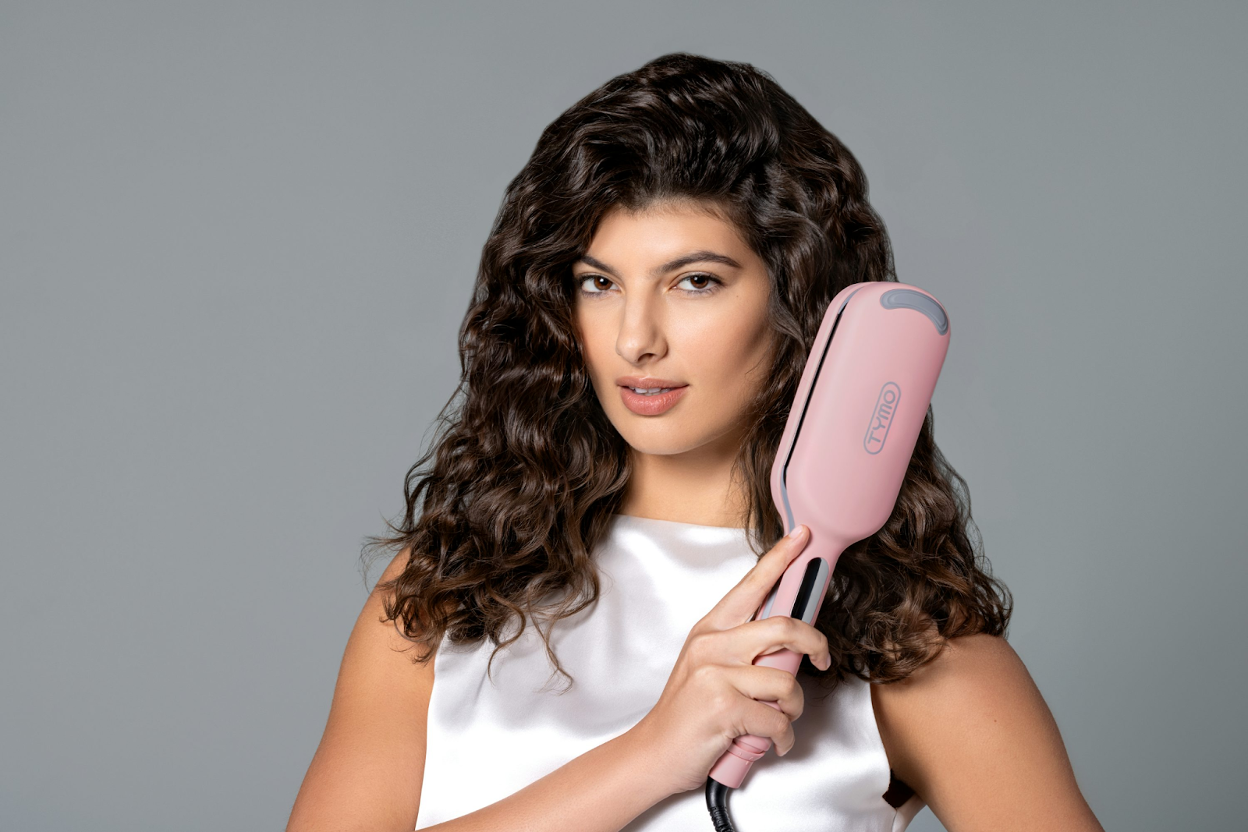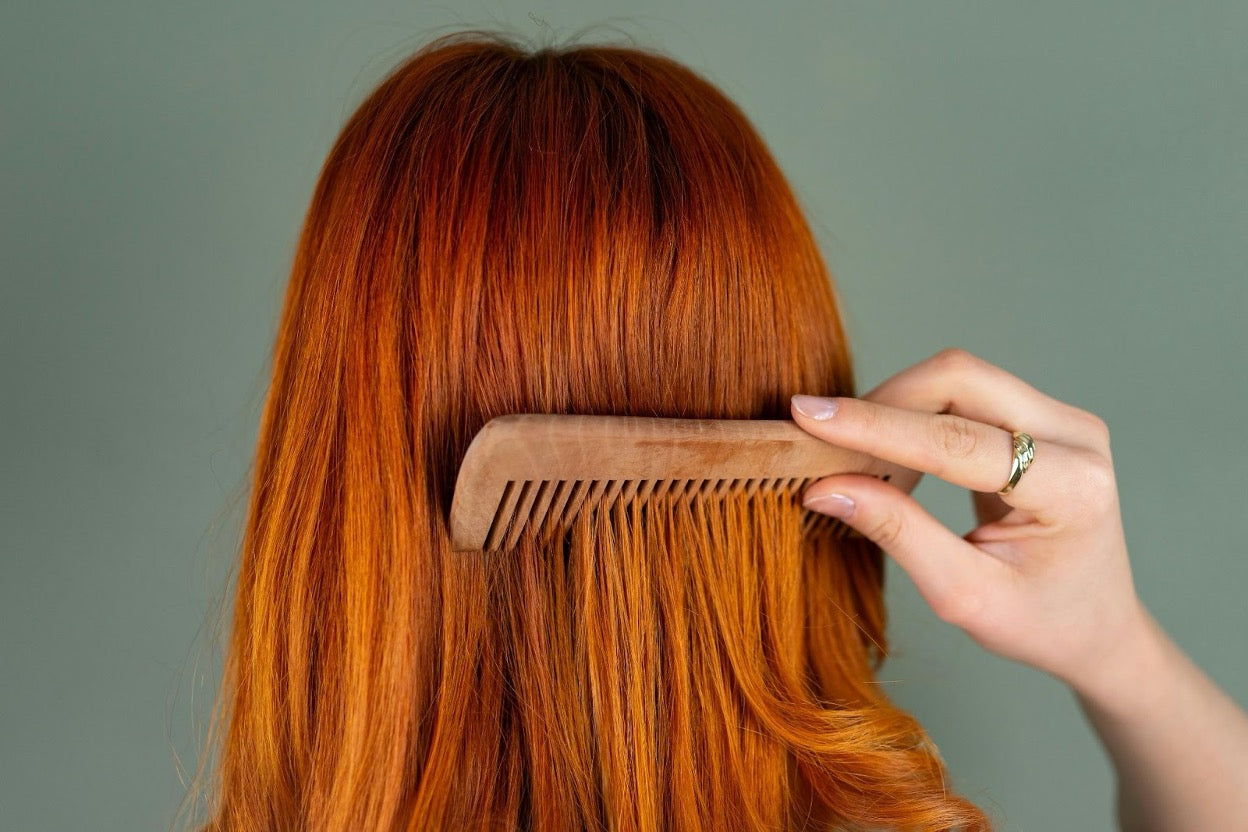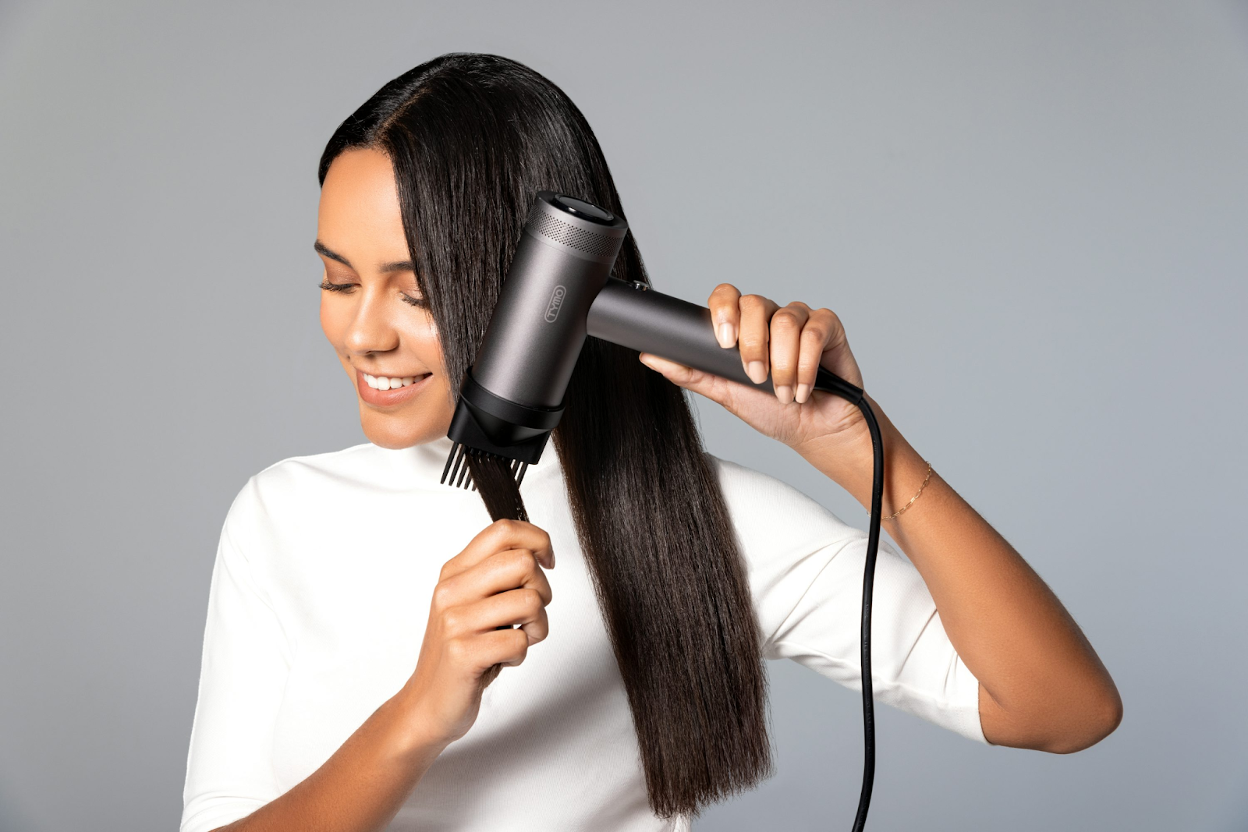Amla Oil vs Almond Oil for Hair Growth: Benefits, Pros & Cons
BY TRYBELLO
Nov 17, 2025

Key Takeaways
- Natural oils like amla and almond nourish follicles, protect the scalp, and seal in moisture to support healthy hair growth.
- Amla oil strengthens hair, stimulates dormant follicles, extends the growth phase, and reduces shedding, making it ideal for thinning or premature graying.
- Almond oil repairs and moisturizes dry or damaged hair, improves elasticity, and protects strands while being gentle on sensitive scalps.
- Amla delivers faster growth results and penetrates deeply into follicles, while almond gradually improves hair strength, shine, and manageability.
- Trybello Hair Helper Spray combines biotin, caffeine, and castor oil in a lightweight, non-greasy formula to nourish the scalp, reduce shedding, and promote longer, thicker hair with visible results backed by a 120-Day Growth Guarantee.
Why Your Hair Needs Natural Oils: The Truth About Hair Growth
Hair typically grows about half an inch per month, but this growth can be limited by dryness, breakage, and scalp imbalance. Natural oils help optimize growth by nourishing follicles, protecting the scalp, and sealing in moisture so you keep more of the length you grow.
Your scalp naturally produces sebum to protect and moisturize hair, but washing, styling, and environmental factors can strip it away. Oils like amla and almond replenish these natural lipids while delivering nutrients that support strong, healthy growth.
Since hair growth begins at the follicle, effective care must target the scalp. Amla and almond oils penetrate deeply to feed follicles, reduce protein loss, and shield against environmental stressors. By strengthening from the root up, natural oils create the ideal foundation for lasting hair growth.
“Doctor-Approved Natural Spray Rapidly Boosts Growth & Thickness.
Why 100,000+ Women Are Switching to Trybello!"
Join over 100,000 happy customers who've transformed their hair with our doctor-formulated spray in just 12 weeks, rated 4.8/5 by 40,000+ real users.
Proven Natural Ingredients
- • Caffeine Extract – Blocks DHT and boosts blood flow to follicles
- • Biotin – Direct scalp absorption, no pills needed
- • Castor Oil – Soothes inflammation and locks in moisture
- • Rice Water Extract – Strengthens hair and reduces shedding
120-Day Growth Guarantee: No results? 100% money back, no questions asked.
Amla Oil: The Ancient Hair Growth Secret
Amla oil, derived from the Indian gooseberry (Phyllanthus emblica), has been a trusted part of Ayurvedic hair care for centuries. It has high vitamin C, antioxidants, and essential fatty acids, it helps prevent hair loss, slow premature graying, and promote new growth. Traditionally, dried amla berries are infused in coconut or sesame oil to extract nutrients, creating a deep green, herbal oil that deeply nourishes the scalp and follicles.
What Makes Amla Oil Special for Hair
What sets amla oil apart is its ability to strengthen existing strands while stimulating follicles for new growth. Its rich vitamin C content supports collagen production, helping hair grow stronger and more resilient. Antioxidants like gallic acid and flavonoids protect follicles from environmental damage while improving scalp circulation, ensuring nutrients reach the roots efficiently.
5 Ways Amla Oil Boosts Hair Growth
Amla oil helps extend the anagen, or active growth phase, allowing hair to grow longer before shedding. It strengthens roots to reduce early hair fall and improves scalp blood flow for better nutrient delivery. Its natural anti-inflammatory properties calm irritation and help balance scalp pH, while also preventing DHT buildup, a key factor in pattern hair loss.
Best Hair Types for Amla Oil
Amla oil is ideal for normal to oily or thick hair types, as it helps regulate sebum while leaving hair smooth and manageable. People with coarse hair often notice improved shine and softness with regular use. Those prone to premature graying benefit from its antioxidant content, which supports melanocyte activity, helping preserve natural hair color. It is also beneficial for stress-related shedding, as its adaptogenic properties help balance the body’s stress response and promote steady growth cycles.

Extend the growth phase of your hair with consistent amla oil use.
Almond Oil: The Nourishing Hair Growth Solution
Almond oil, extracted from sweet almonds (Prunus dulcis), is a lightweight, pale yellow oil valued for its hair-nourishing properties. Unlike stronger oils, it has a mild scent and leaves minimal residue, making it ideal for people who like a gentle, easy-to-use treatment. Rich in monounsaturated fatty acids, especially oleic acid, almond oil absorbs quickly, seals in moisture, and prevents dryness and breakage, supporting healthy length retention.
Key Nutrients in Almond Oil That Support Hair Health
Almond oil is packed with vitamin E, biotin, magnesium, omega-9 fatty acids, and phospholipids, all of which work together to strengthen hair from root to tip. Vitamin E acts as a powerful antioxidant, reducing oxidative stress in follicles, while biotin supports keratin production, essential for strong hair. Studies have shown that in cases of poor hair or nail growth, biotin led to noticeable clinical improvement, highlighting its key role in strengthening hair. Magnesium prevents calcium buildup on the scalp, omega-9 fatty acids improve elasticity, and phospholipids help repair damaged cuticles.
How Almond Oil Boosts Hair Growth
Almond oil strengthens hair elasticity, reducing breakage and split ends. Its lightweight structure allows better absorption of nutrients and balances scalp oil production without buildup. By forming a protective film over the hair shaft, it shields strands from environmental damage such as UV rays and pollution, while keeping the cuticle smooth and hair shiny. It also works effectively as a carrier oil for other herbal or essential oils, enhancing their benefits.
Who Should Use Almond Oil for Hair
Almond oil is ideal for dry, damaged, or color-treated hair, and also fine hair that can be weighed down by heavier oils. Its gentle, anti-inflammatory properties make it suitable for sensitive scalps, while its moisturizing benefits extend to skin care as well. Regular use supports gradual, cumulative improvements in hair strength, shine, and overall health.
Head-to-Head Comparison: Amla vs Almond Oil
When comparing amla and almond oils, both support hair health but in different ways, making each better suited to specific needs or a combined approach.
Texture and Application Differences
Amla oil is thick, dark amber to greenish, and has a strong herbal scent. Its heavier texture allows it to sit on the scalp longer, delivering deep nourishment, though it may feel greasy if not washed out thoroughly. Almond oil is lighter, pale golden, and absorbs quickly with minimal residue. Its mild nutty scent and easy spreadability make it ideal for daily use and finer hair types.
Absorption Rate and Effectiveness
Amla oil penetrates deeply into follicles, stimulating growth, improving scalp circulation, and reducing shedding, making it effective for thinning or premature graying. Almond oil works primarily on the cuticle and hair shaft, gradually strengthening, moisturizing, and protecting strands to reduce breakage. Amla generally delivers faster growth results, while almond improves overall hair quality, shine, and manageability.
Results Timeline
Amla oil shows noticeable results within 3–4 weeks, with reduced hair fall often seen in the first two weeks. Full-length benefits appear over 3–6 months. Almond oil improves texture and manageability within 2–3 weeks, but measurable growth benefits usually take 6–8 weeks, with significant length retention and reduced breakage visible after 3–4 months. Amla actively stimulates growth, whereas almond preserves and strengthens existing hair over time.
How to Use These Oils for Maximum Hair Growth
The way you apply amla and almond oils greatly affects their effectiveness. For best results, apply them to clean, slightly damp hair free from styling products, ensuring nutrients reach the follicles rather than just coating the strands.

Almond oil locks in moisture and repairs damaged strands naturally.
Hot Oil Treatment
Warming the oil before application helps it penetrate the scalp by opening cuticles and increasing blood flow. Heat 2–3 tablespoons of oil until warm, apply to sections of hair, and massage the scalp for 5–10 minutes. Cover with a warm towel or shower cap for 30–60 minutes, then wash out thoroughly. Performing this 1–2 times weekly stimulates follicles and enhances absorption.
Overnight Conditioning
For deep nourishment, apply oil before bed, massage it into the scalp, and distribute it through the hair. Secure in a loose braid or bun and cover with a silk scarf or use a silk pillowcase. Rinse thoroughly in the morning. Overnight treatments allow maximum absorption and are ideal for very dry or slow-growing hair, once weekly for amla and up to twice weekly for almond oil.
Blending Oils for Enhanced Benefits
Combining amla and almond oils can target multiple hair concerns. Thicker hair often benefits from more amla oil, while finer hair responds better to almond oil-dominant blends. Custom mixtures maximize the unique strengths of each oil for healthier, stronger hair.
Why Choose Amla or Almond Oil: Advantages and Drawbacks
Both amla and almond oils offer unique benefits for hair, but understanding their strengths and limitations can help you choose the right one for your hair goals.
Benefits and Strengths of Amla Oil
Amla oil is ideal for those dealing with thinning hair or seeking faster growth. Its potent combination of vitamin C, tannins, and phyllemblic compounds stimulates dormant follicles, extends the active growth phase, and improves scalp circulation. Antioxidant protection helps prevent oxidative damage, while its mild anti-DHT properties create a less hostile environment for susceptible follicles. Users often notice reduced shedding within 2–3 weeks and visible regrowth around the hairline within 6–8 weeks. Amla oil also helps cleanse follicle openings, supporting stronger, healthier strands from the root.
Drawbacks and Limitations of Amla Oil
Amla oil has a thicker texture and a strong herbal scent, which can feel greasy if not washed out thoroughly. Its heavier consistency may be less comfortable for sensitive scalps, and application requires more effort to distribute evenly through the hair.
Key Advantages of Using Almond Oil
Almond oil is particularly effective for dry, damaged, or sensitive hair. Its high content of oleic and linoleic acids restores moisture and elasticity, while vitamin E neutralizes free radicals to repair heat- or chemically-damaged strands. The oil is gentle, hypoallergenic, anti-inflammatory, and balances scalp pH, making it suitable for reactive or irritation-prone scalps. Its lightweight texture absorbs quickly, distributes easily, and leaves minimal residue, enhancing manageability and shine over time. Almond oil also works well as a carrier for other growth-supporting oils.
Things to Consider About Almond Oil
Almond oil works more gradually than amla, with slower measurable growth benefits. While it strengthens and protects hair, it is less effective at stimulating dormant follicles or accelerating the growth cycle, making it better suited for maintenance and restoration rather than rapid regrowth.
Natural Oils for Hair Growth: Amla vs Almond
| Aspect | Amla Oil | Almond Oil |
|---|---|---|
| Origin & Key Nutrients | Indian gooseberry; rich in vitamin C, antioxidants, and essential fatty acids | Sweet almonds; rich in vitamin E, biotin, magnesium, omega-9 fatty acids, and phospholipids |
| Primary Benefits | Stimulates follicles, extends growth phase, reduces shedding, slows graying | Strengthens hair shaft, seals moisture, improves elasticity, protects from damage |
| Hair Types Best Suited | Normal to oily, thick, coarse, or prone to premature graying | Dry, damaged, fine, color-treated, or sensitive scalps |
| Absorption & Texture | Thick, dark, strong herbal scent; penetrates follicles deeply | Light, pale, mild nutty scent; absorbs quickly, minimal residue |
| Results Timeline | Noticeable in 3–4 weeks; full benefits 3–6 months | Initial texture improvements 2–3 weeks; growth benefits 6–8 weeks; cumulative results over months |
| Drawbacks / Limitations | Can feel greasy; strong scent; may cause temporary shedding; heavier for sensitive scalps | Slower measurable growth; requires consistent use; prone to oxidation; subtler effects |
| Best Use | Targets thinning, hair loss, and faster growth | Moisturizes, repairs damage, maintains hair health, gentle on sensitive scalps |
Trybello Hair Helper Spray: Boost Your Hair Growth Naturally
If you’re looking for an easy, effective way to strengthen and revitalize your hair, the Trybello Hair Helper Spray is your go-to solution. Formulated with clinically backed ingredients like biotin, caffeine, and castor oil, this lightweight spray nourishes the scalp, stimulates dormant follicles, and supports visible regrowth. It helps reduce shedding, improve shine, and promote longer, thicker hair all without harsh chemicals, sulfates, or synthetic fragrances.

Hair Helper Spray by Trybello: a modern, easy way to nourish and strengthen your hair.
Perfect for all hair types, Trybello Hair Helper Spray absorbs quickly, leaving hair feeling refreshed, soft, and healthy while delivering essential nutrients directly to the roots. Our non-greasy formula makes it ideal for daily use, whether applied in the morning or before bedtime. Incorporating it into your routine is simple: just spray, massage gently, and let the active ingredients work their magic.
Backed by Trybello’s 120-Day Growth Guarantee, we let you try it completely risk-free and see real results. Thousands of satisfied users report stronger, fuller, and more radiant hair in just weeks. Make Trybello Hair Helper Spray a key part of your hair care regimen and give your hair the nourishment it needs to grow healthier and more resilient every day.
Give your hair the boost it deserves with Trybello today!
Frequently Asked Questions (FAQs)
Trending Topics
See our latests posts #TRYBELLO












